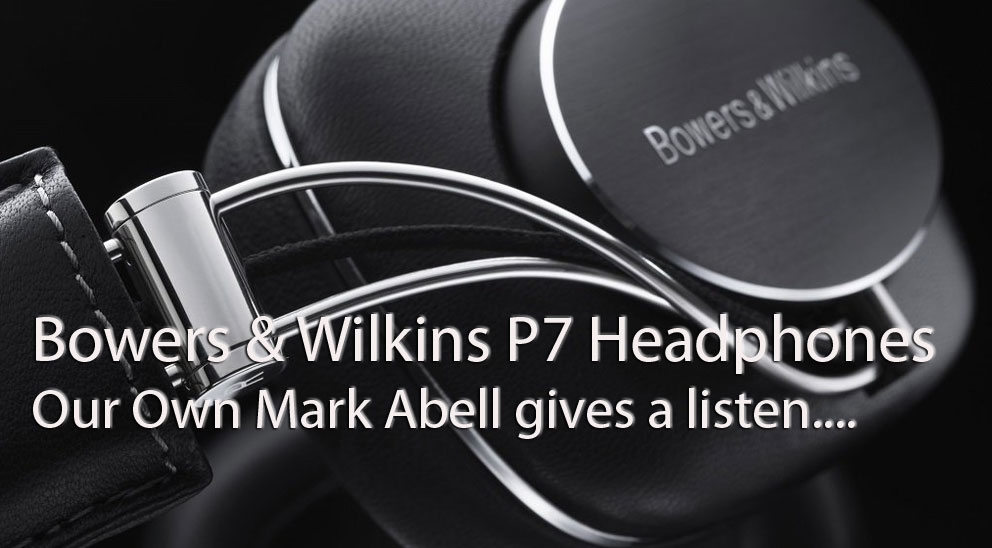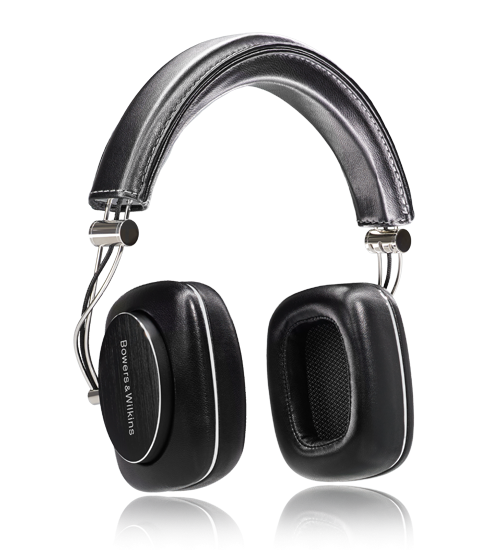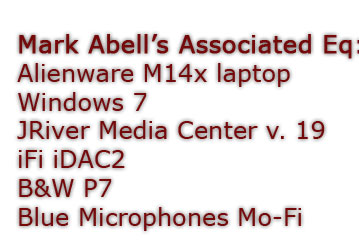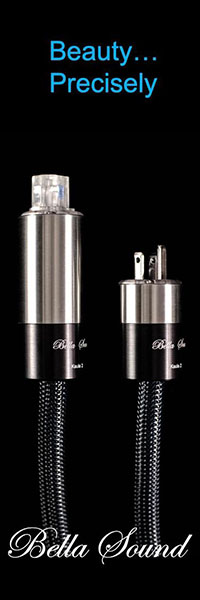Bowers & Wilkins Model P7 Headphones

 Bowers & Wilkins is an electronics manufacturing company that was created in 1966 with the intent of devising the world’s most accurate loudspeaker system for the purposes of listening to classical music in the most accurate way possible. Today, their product line is considerably more expansive with both wired and wireless speakers and headphones, car audio systems for Volvo and Maserati, and a music label called The Society of Sound that features many classical albums available in a variety of lossless formats such as a 24-bit studio master sound quality in the FLAC24 format, and a16-bit 44.1 kHz CD-quality option in the FLAC16 and Apple Lossless formats.
Bowers & Wilkins is an electronics manufacturing company that was created in 1966 with the intent of devising the world’s most accurate loudspeaker system for the purposes of listening to classical music in the most accurate way possible. Today, their product line is considerably more expansive with both wired and wireless speakers and headphones, car audio systems for Volvo and Maserati, and a music label called The Society of Sound that features many classical albums available in a variety of lossless formats such as a 24-bit studio master sound quality in the FLAC24 format, and a16-bit 44.1 kHz CD-quality option in the FLAC16 and Apple Lossless formats.

Look and Feel
The Bowers & Wilkins P7 headphones have a very polished look to them. They possess a black leather headband attached to leather-ear cups via a stainless steel shiny metal frame and sliders with brushed aluminum oval pads on the sides with the company’s logo. Consequently, this elegance even carries over to its unattachable cord which is accented with a stainless steel volume knob with two rubber buttons, which reminds me of the aesthetic of Bang and Olufsen’s BeoSound 2 MP3 player of yore.
Having experienced dozens of headphones over the years, the B&W P7 is among the handful of most comfortable ‘phones I’ve worn for extended listening sessions. While I prefer over-ears over on-ears and in-ears in general, the lamb’s leather used in the headband and ear-cups has a sumptuous feel that bathes the ears and the top of the head in comfort moreso than other on-ears in my collection such as the Monster Inspiration.
Listening experience
 What is distinctive about the design of B&W P7 is that its 40mm aluminum-copper driver was made to replicate the encompassing listening experience a listener would encounter with a loudspeaker but while wearing headphones. While I will not explore this in mind-numbing technical detail, I will suffice to say that Innerfidelity’s Tyll Hertsens spoke to Stuart Nevill, B&W’s head of engineering about their innovative intent and came to the following conclusion: B&W’s loudspeaker driver expertise was applied to the development of a pressed polymer fiber cone with a surround which is only occasionally used in headphones such as Denon’s AH-DX000 headphone, and achieves a more comprehensive frequency range than other more common headphone designs.
What is distinctive about the design of B&W P7 is that its 40mm aluminum-copper driver was made to replicate the encompassing listening experience a listener would encounter with a loudspeaker but while wearing headphones. While I will not explore this in mind-numbing technical detail, I will suffice to say that Innerfidelity’s Tyll Hertsens spoke to Stuart Nevill, B&W’s head of engineering about their innovative intent and came to the following conclusion: B&W’s loudspeaker driver expertise was applied to the development of a pressed polymer fiber cone with a surround which is only occasionally used in headphones such as Denon’s AH-DX000 headphone, and achieves a more comprehensive frequency range than other more common headphone designs.
Upscale headphones will ideally be paired with a digital analog converter (DAC) that will bypass the listener’s included DAC in their media player be it a laptop, tablet, phone, or MP3 player. I like to make the analogy that just as many German luxury cars require premium gasoline for their engines to function at maximum performance without knocking, an external DAC accomplishes that feat in the consumption of hi res music. Musical delivery is smoother and achieves more of a sparkle when a DAC is part of equation, and I could swear I’ve perceived minor distortions in musical playback when listening to hi-res files without an added DAC. For the purposes of this review,  I used iFi’s Micro iDAC2 which allows listeners the option of listening to ultra high res Direct Standard Digital (DSD) recordings in up to 384 kHz which proved more than adequate in tackling a download of Tame Impala’s ‘Currents’ album in 24-bit/44.10 kHz, which is an improvement over typical CD-quality of 16-bit/44.1 kHz taken from Quobuz’s new release catalog. Other increases over CD-quality would be 16-bit/48 kHz, 16-bit/96 kHz, 16-bit/192 kHz, 24-bit/48kHz, 24-bit/88.2 kHz, 24-bit/96 kHz, 24-bit/176.4 kHz, and 24-bit/192 kHz, though this list is by no means exhaustive as it does not include typical DSD rates which are even larger. I mention these sample rates to show that the iDAC2 is future proof to some extent in that most of the new recordings I’m interested in such as Dan Auerbach’s release of The Arc’s ‘Yours Dreamily’ in 24-bit/44.1 kHz and Muse’s ‘Black Holes And Revelations’ in 24-bit/96 kHz are well within the Micro’s capabilities and the unit will not need to be replaced to playback some upcoming latest-and-greatest file format with a higher sampling rate for some time. So, how faithfully does the B&W P7 paired with the Micro reproduce ‘Currents’?
I used iFi’s Micro iDAC2 which allows listeners the option of listening to ultra high res Direct Standard Digital (DSD) recordings in up to 384 kHz which proved more than adequate in tackling a download of Tame Impala’s ‘Currents’ album in 24-bit/44.10 kHz, which is an improvement over typical CD-quality of 16-bit/44.1 kHz taken from Quobuz’s new release catalog. Other increases over CD-quality would be 16-bit/48 kHz, 16-bit/96 kHz, 16-bit/192 kHz, 24-bit/48kHz, 24-bit/88.2 kHz, 24-bit/96 kHz, 24-bit/176.4 kHz, and 24-bit/192 kHz, though this list is by no means exhaustive as it does not include typical DSD rates which are even larger. I mention these sample rates to show that the iDAC2 is future proof to some extent in that most of the new recordings I’m interested in such as Dan Auerbach’s release of The Arc’s ‘Yours Dreamily’ in 24-bit/44.1 kHz and Muse’s ‘Black Holes And Revelations’ in 24-bit/96 kHz are well within the Micro’s capabilities and the unit will not need to be replaced to playback some upcoming latest-and-greatest file format with a higher sampling rate for some time. So, how faithfully does the B&W P7 paired with the Micro reproduce ‘Currents’?
The first track I used to demo the ‘phones was “Let It Happen”: I listened to this track a dozen times but it wasn’t until the inclusion of the iDAC2 that I noticed an electric hiss that sounds like a stream of water behind the chorus. Danceable grooves make listeners want to tap and move their feet. An electric organ makes its appearance at 4:03 vaguely reminiscent of Bach’s fugues but fades out to more electric beats by 5:05. The tune has the bounciness of Peter Bjorn and John’s “Young Folks” with drums, faux finger snaps and hand claps.With the B&W, drums are underemphasized while the electric organ is full-bodied from 4:19 to 4:30 and then tapers off in intensity. The B&W has neutral coloring and is perhaps more accurate and musical than contenders.
Then I tested the song “The Moment” which features simulated handclaps and finger snaps that lend it an ecstatic exuberance. With this track, the B&W presents the sound in a calm and controlled manner.
The last track I surveyed was “Cause I’m A Man.” With the B&W the texture is more neutral and bass is under-stated and the drums, guitars and vocal are more intelligible than with other ‘phones.
In closing, listening to ‘Currents’ through the B&W P7 presents an experience that is perhaps more musical and refined than competitors as it takes listeners on a journey that can be likened to riding in the cabin of a luxury sedan with an acoustically laminated windshield such as the 2016 Hyundai Genesis that insulates the listener from engine and wind noise, allowing the listener to focus on the notes derived from the instruments themselves and while the P7 is not a noise-cancelling headphone, circumvents the distortion and bass bloat listeners may experience with other ‘phones. Recommended!

mark abell
Specifications: Price $399.00
– over-the-ear headphones with closed back design to help block out noise
– in-line remote for playback and volume control with and iPod, iPad, or iPhone
– built-in microphone on remote for receiving calls on an iPhone
– soft, leather-covered earpads and headband for exceptional comfort and durability
– 40mm dynamic drivers deliver smooth, detailed sound
– frequency response: 10-20,000 Hz
– sensitivity: 111 dB at 1kHz
– impedance: 22 ohms
– detachable 52-inch cable with inline remote and miniplug connectors (3.5mm on player end, 2.5mm on headphone end)
– includes additional miniplug cable (no remote) for use with a wide variety of devices
– folding design for easy storage
– includes carrying case
– 1/4″ plug adapter included
– weight: 10.2 ounces
– warranty: 2 years
Website: http://www.bowers-wilkins.com
Stereo Times Masthead
Publisher/Founder
Clement Perry
Editor
Dave Thomas
Senior Editors
Frank Alles, Mike Girardi, Russell Lichter, Terry London, Moreno Mitchell, Paul Szabady, Bill Wells, Mike Wright, and Stephen Yan,
Current Contributors
David Abramson, Tim Barrall, Dave Allison, Ron Cook, Lewis Dardick, John Hoffman, Dan Secula, Don Shaulis, Greg Simmons, Eric Teh, Greg Voth, Richard Willie, Ed Van Winkle, Rob Dockery, Richard Doran, and Daveed Turek
Site Management Clement Perry
Ad Designer: Martin Perry





Be the first to comment on: Bowers & Wilkins Model P7 Headphones